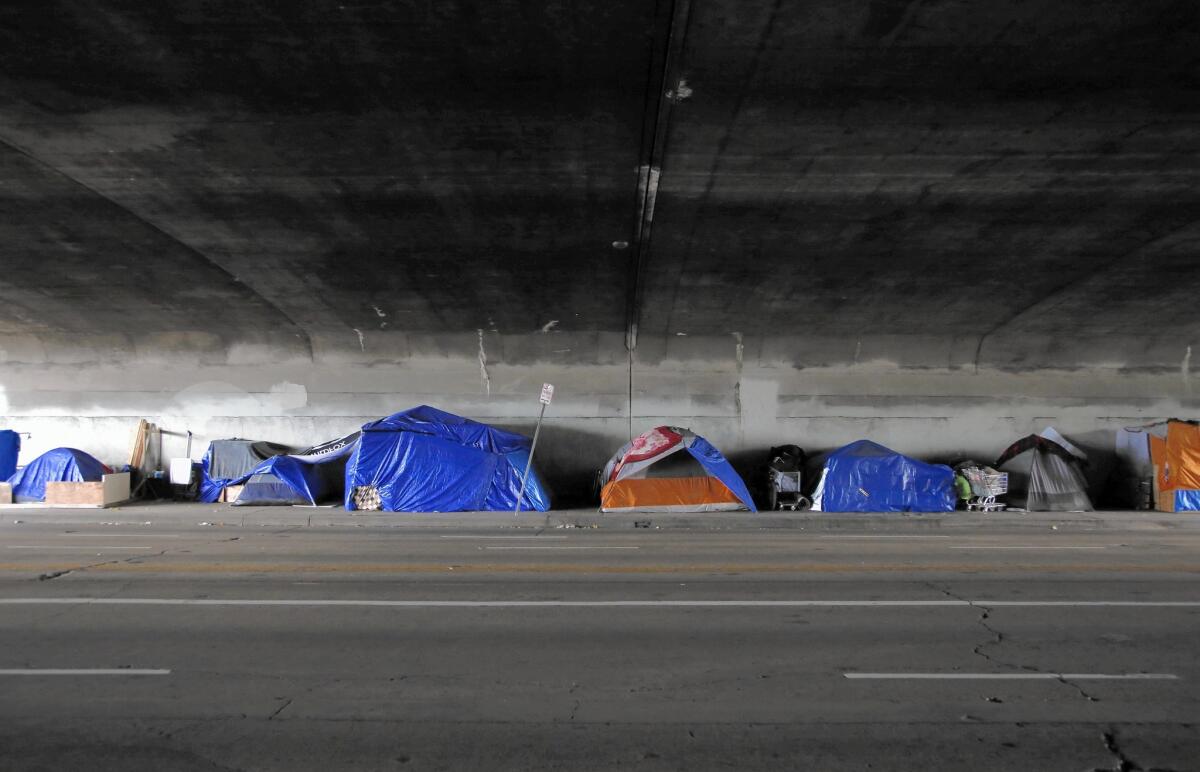To tackle homelessness, look to jails, hospitals, foster homes, group says

- Share via
Thousands of people stream out of Los Angeles county jails, foster homes, hospitals and state prisons with no place to go, overwhelming efforts to stem the rise in homelessness, experts said Thursday.
The county and state don’t track how many people are released from public institutions to homelessness. But speakers at a meeting of the county homeless initiative policy summit estimated that up to 20% of the 32,000 state prisoners discharged to Los Angeles County under realignment, and 10% of the 8,000 to 10,000 who leave county jails each month, end up in the streets.
“The homeless services institutions cannot effectively combat much less eradicate homelessness” in the face of the enormous in-flow, said Phil Ansell, a top social services administrator heading the county’s homeless initiative.
Thursday’s meeting was one of 18 the county has called to develop a plan to fight homelessness, which increased 12% countywide over the last two years, encompassing 44,000 people living in rattletrap vans and unsightly encampments across the region.
The city of Los Angeles recently announced plans to declare a state of shelter emergency. The county’s plan, due in February, is being developed in concert with the city, which has its own blueprint process underway.
The meeting also focused on former foster children, half of whom end up homeless within two years of leaving the system. The county has extended housing and services to emancipated foster children ages 18 to 21, but that has simply delayed when they become homeless, speakers said.
Ansell said that despite the grim statistics, the county has an unprecedented opportunity to reduce homelessness. The Affordable Care Act has extended mental health and substance abuse treatment to many homeless people who previously had neither, and the local and state criminal justice systems are shifting to divert homeless mentally ill people out of incarceration, he suggested.
Speaker after speaker, however, said everything from incomplete medical evaluations to the difficulty of overcoming a criminal record prevented ex-inmates from reuniting with their families or finding housing and jobs.
The group discussed possible solutions, starting with counting how many people coming out of institutions are becoming homeless. Many of the ideas centered on working to sign up inmates for federal disability payments, Medi-Cal and mental health and substance abuse treatment before they leave jail. The working group will meet again in December to shape recommendations for the Board of Supervisors.
Twitter: @geholland
ALSO
New abuse allegations filed in civil suit against Saudi prince
18-year-old charged in leaf blower prank at Newport Beach theater
With help of DNA, suspect in 1986 killing of Agoura Hills boy is ID’d
More to Read
Sign up for Essential California
The most important California stories and recommendations in your inbox every morning.
You may occasionally receive promotional content from the Los Angeles Times.














